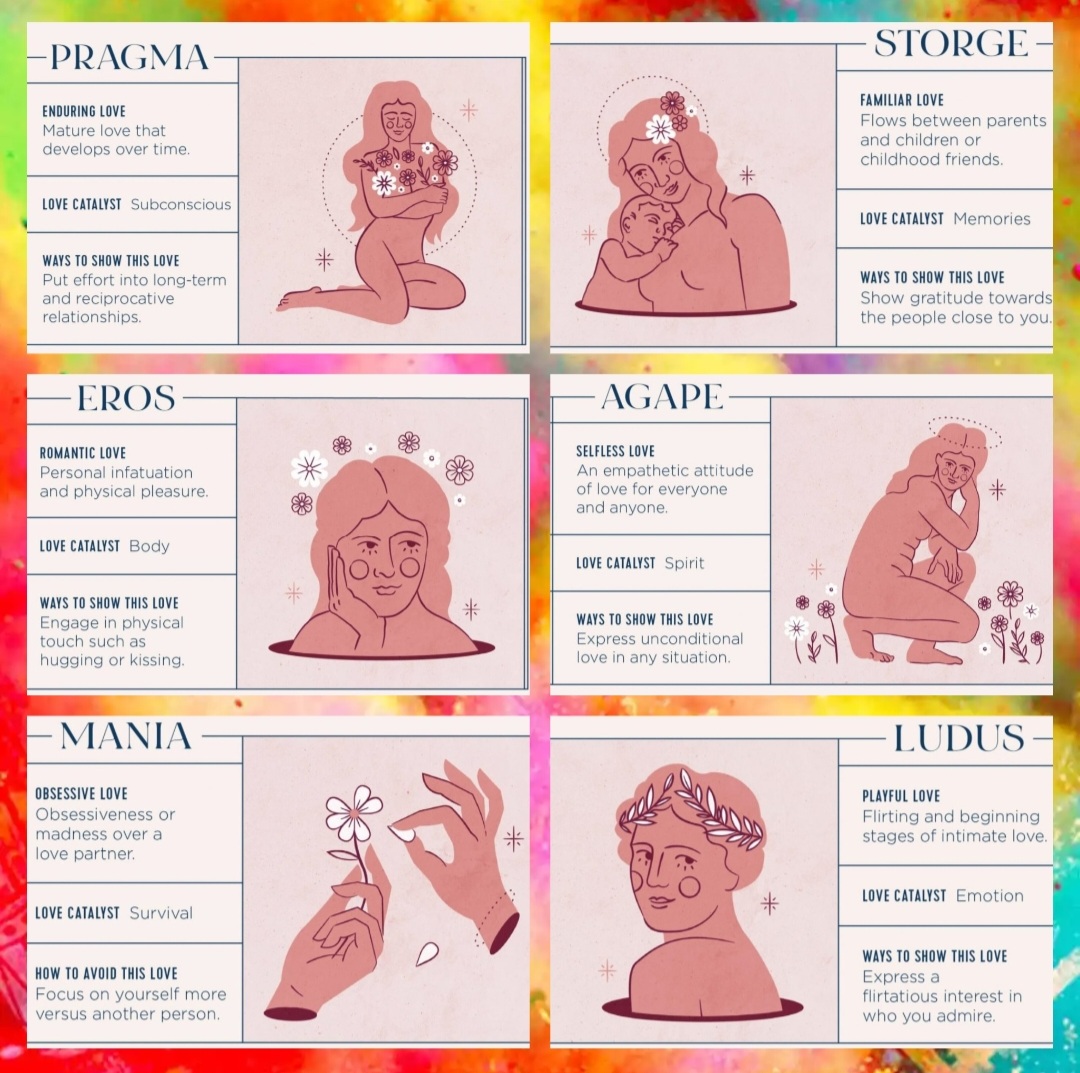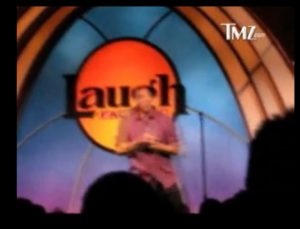For the four assignments that you choose to complete throughout the semester, you will reflect on your takeaway from each. Do not copy and paste your assignments. Think of this space as a brief way to communicate how the assignment engaged you, how it was personally relevant, and reflect on how you learned more about yourself after completion. Each assignment recap will need to contain an illustrative picture. Examples will be provided.
ATA4
I learned many things from this assignment that I had not known before. Something that I always had a hunch, but this assignment confirmed, was that there are many different attachment styles amongst people. I learned that Eros style of love indicates strong physical preferences, early attraction, and intensity of emotion. Ludus style of love indicates love as an interaction game to be played out, and that Ludus has a manipulative quality. Storge is a combination of love and friendship. Pragma is a rational calculation with a focus on desired attributes of the lover. Pragma is also called love planning. Mania is a symptom of love based on the uncertainty of self and the lover. Lastly, I learned that agape is an all-giving, non-demanding love. I also got to learn where I stood on all of these assessments in relation to the averages of males and females.
I can apply this to a philosophy class I took at Old Dominion University. In that class we learned about agape. I can also apply this to another class I took called psychology of human intimacy. In that class we also learned about Eros, Agape, and styles of love. I believe I also took a few assessments of my own personality in that class. I do not remember what I scored on them.
The assignment was personally relevant to me because it made me reflect on past relationships and affirm my decisions to leave them. I got to sit back and evaluate where I have been. How far I have come and the choices I made. As well as also think about where I wanted my love relationships to be and my styles of love.
I chose this representative visual image because it is a collage that I made of all of the types of love discussed on this assignment. I took screenshots and put them all together.

https://www.ftd.com/blog/give/types-of-love
ATA3
What I learned from assignment number three was a deeper understanding of the theories that are attributed to prejudice. I am now able to more decisively identify prejudice as having a negative emotional reaction to individuals based on their group membership. I also further advanced my knowledge of ingroups, outgroups, alcohol as an inhibitor to prejudicial discretion, social identity theory, perceived threat, and realistic conflict theory.
Something else I have learned that I can apply this assignment to is my drugs and behavior class. In that class I learned of the inhibitory effects of alcohol on the brain. In both classes I learned that alcohol can lower the threshold for actions we would not have previously done. So, if you could control yourself from doing something, alcohol makes it easier to do that thing, like prejudicial thought.
This assignment was personally relevant to me because a couple of the radio talk shows and podcasts I listened to discussed it. So even before this assignment came up, I was already aware of Michael Richard’s rant, and I had gotten multiple comedian’s perspectives on it. The shows I heard it on were “The Jim Norton and Sam Roberts Show, and The Bennington Show.” One of the things that made me laugh was on The Bennington Show, when the hosts were discussing and going over the rant play by play. One host, Chris Stanley said “I like how he tries to make it philosophical at the end, like he’s going somewhere with it.” And then they played it back and I heard Michael Richard’s after all the prejudicial stuff say… “these are the things, ya see, these are the things.” It was hilarious.
They then went on to discuss Michael Richard’s apology and how the audience thought he was doing a bit, and Jerry Seinfeld had to say “stop, it’s not funny.” When Michael Richards was trying to be serious. The assignment was also personally relevant to me because the radio shows I listened to, went over whether it is more advantageous for a person to embrace the mistake they made, or to consistently apologize for it. An argument was made that no matter how many times someone apologizes for what they did, it is never enough for the lynch mob.
My rationale for choosing this image is because this is Michael Richards in his moment when he went off. This is that moment in time, and it is interesting to watch.

https://www.tmz.com/2006/11/20/kramers-racist-tirade-caught-on-tape/
ATA2
What I learned from the assignment was about three components when analyzing the self. These components are self concept, perceived self control, and self presentation. I also learned more about myself and got to analyze myself over time. I also learned that self presentation can be deceiving and that self concept covers not only the present self, but the past and the future self.
I can apply this assignment to a book I read called “Meditation and The Art of Ecstasy” by Osho. In this book, the guru discusses how to come into contact with one’s inner self. One of the things I remember from this book was that he said “if you stare into a mirror long enough, you will access your subconscious”. This of course is non-science and cannot be proven, it’s just interesting.
The assignment was personally relevant me because it really allowed me to observe myself over time and see how I changed for the better. I got to witness positive changes. An example was my attached photo where I can see my perceived self control is high and I am running 5 miles per day. It motivates me to want to start running again.
I chose this photo because I used it in my Assignment 2 paper. It outlines my self presentation and perceived self control I spoke about in my paper.

ATA1
What I learned from this assignment was 4 different types of heuristics. I learned about the representativeness heuristic, the availability heuristic, anchoring and adjustment, and the status quo heuristic. I also used critical thinking and applied the heuristics to my life with examples.
I can apply these heuristics to other things I have learned. For example, I took cognitive psychology with Dr. Ivan Ash, and we also learned how people often have the easiest time remembering the first and the last things in a sequence. I can relate this to the availability heuristic.
This assignment was personally relevant to me because it is always fun to learn concepts of human behavior and I will definetly try to use these where I work. I recently got a promotion at my job, and I think I can apply these concepts to my role. Leadership is expected of me in my new role and I will take these heuristics into account when assessing behaviors and interactions with coworkers.
The image I attached was chosen because I used an example of buying a parrot when outlining the anchoring and adjustment heuristic. This is a parrot I would consider buying. It is a scarlet macaw and goes for about $5,000.

https://www.thesprucepets.com/scarlet-macaws-390840